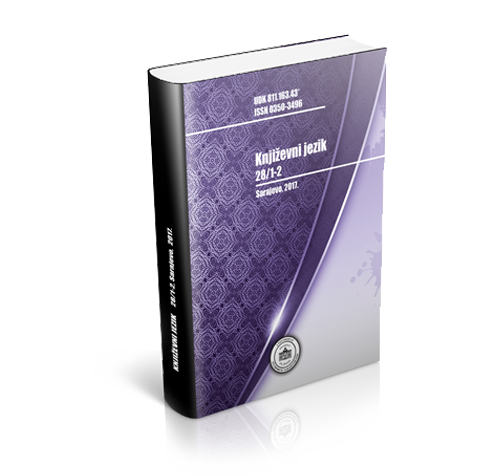Sustav u sufiksalnoj tvorbi glagola
The System of Verbal Suffixes in*
Author(s): Stjepan BabićSubject(s): Morphology, Lexis, South Slavic Languages
Published by: Institut za jezik
Keywords: verbal system; suffix formation; Croatian literary language; lexis; diachronic surveys;
Summary/Abstract: The classification of verbs in Croat literary (standard) language involves the identification of 58 suffixes for the derivation of verbs: -ačiti, -adisati, -akati, -arati, -ariti, -asati, -atati, -ati, -avati, -cati, -čariti, -čati, -čiti, -esati, -etati, -evati, -ficirati, -ičiti, -ificirati, -ijevati, -ikati, -ikovati, -injati, -irati, -isati, -iti, -ivati (-ivam), -ivati (-ujem), -izirati, -jakati, -jati, -javati, -jeti, -jivati, -karati, -ikati, -ketati, -kivati, -kovati, -nuti, -osati, -otati, -ovati, -sati, -šati, -tati, -ucati, -uckati, -udati, -ukati, -uljiti, -unuti, -usati, -ušati, -ušiti, -uškati, -utati, -vati. Although they all form the verbal system, they are not equally productive and hence they do not participate in the system in the same way. Some of the suffixes are very productive since they yield a large number of new verbs (-ati, -jeti, -kati, -uckati etc) while others serve only for the derivation of one or two verbs like -asati in bjelasati se or esati in šepesati. In the provided diagram (+) stands for the unproductive derivation. From the above diagram it is possible to draw conclusions as to the productivity of the verbal suffix system, although. it is rather difficult to present the system to the full since there are still many unexplored aspects of verbal suffixation processes.
Journal: Književni jezik
- Issue Year: 15/1986
- Issue No: 2
- Page Range: 97-105
- Page Count: 9
- Language: Croatian

